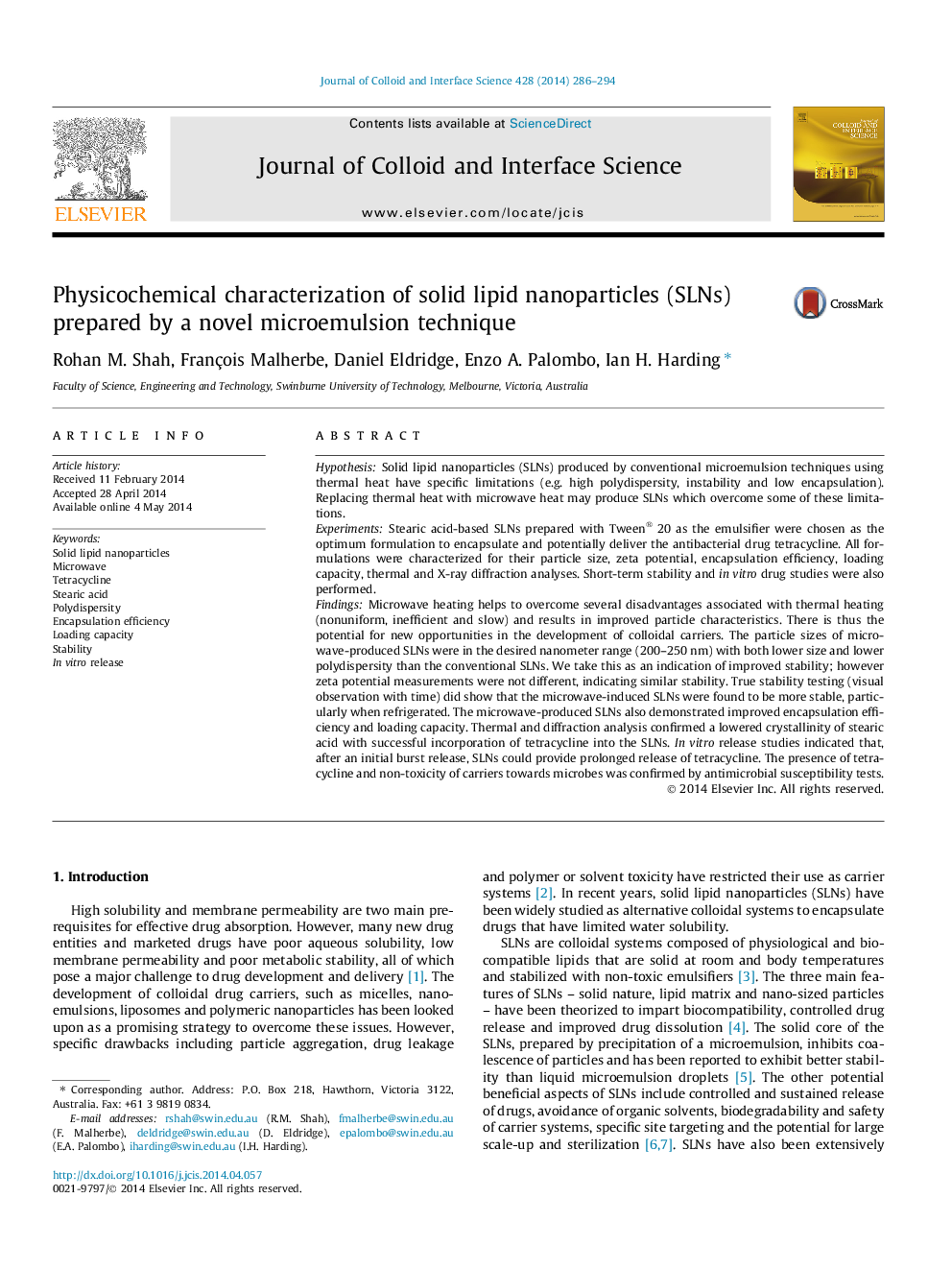| کد مقاله | کد نشریه | سال انتشار | مقاله انگلیسی | نسخه تمام متن |
|---|---|---|---|---|
| 607226 | 1454567 | 2014 | 9 صفحه PDF | دانلود رایگان |

• A novel and facile technology based on microwave heating reported for the first time.
• Microemulsion techniques for SLN production based on heating processes were compared.
• Conventionally employed thermal heat was compared to microwave heating.
• Microwave-produced SLNs with improved stability and ability to better encapsulate.
• In vitro drug release studies were also performed.
HypothesisSolid lipid nanoparticles (SLNs) produced by conventional microemulsion techniques using thermal heat have specific limitations (e.g. high polydispersity, instability and low encapsulation). Replacing thermal heat with microwave heat may produce SLNs which overcome some of these limitations.ExperimentsStearic acid-based SLNs prepared with Tween® 20 as the emulsifier were chosen as the optimum formulation to encapsulate and potentially deliver the antibacterial drug tetracycline. All formulations were characterized for their particle size, zeta potential, encapsulation efficiency, loading capacity, thermal and X-ray diffraction analyses. Short-term stability and in vitro drug studies were also performed.FindingsMicrowave heating helps to overcome several disadvantages associated with thermal heating (nonuniform, inefficient and slow) and results in improved particle characteristics. There is thus the potential for new opportunities in the development of colloidal carriers. The particle sizes of microwave-produced SLNs were in the desired nanometer range (200–250 nm) with both lower size and lower polydispersity than the conventional SLNs. We take this as an indication of improved stability; however zeta potential measurements were not different, indicating similar stability. True stability testing (visual observation with time) did show that the microwave-induced SLNs were found to be more stable, particularly when refrigerated. The microwave-produced SLNs also demonstrated improved encapsulation efficiency and loading capacity. Thermal and diffraction analysis confirmed a lowered crystallinity of stearic acid with successful incorporation of tetracycline into the SLNs. In vitro release studies indicated that, after an initial burst release, SLNs could provide prolonged release of tetracycline. The presence of tetracycline and non-toxicity of carriers towards microbes was confirmed by antimicrobial susceptibility tests.
Figure optionsDownload high-quality image (76 K)Download as PowerPoint slide
Journal: Journal of Colloid and Interface Science - Volume 428, 15 August 2014, Pages 286–294